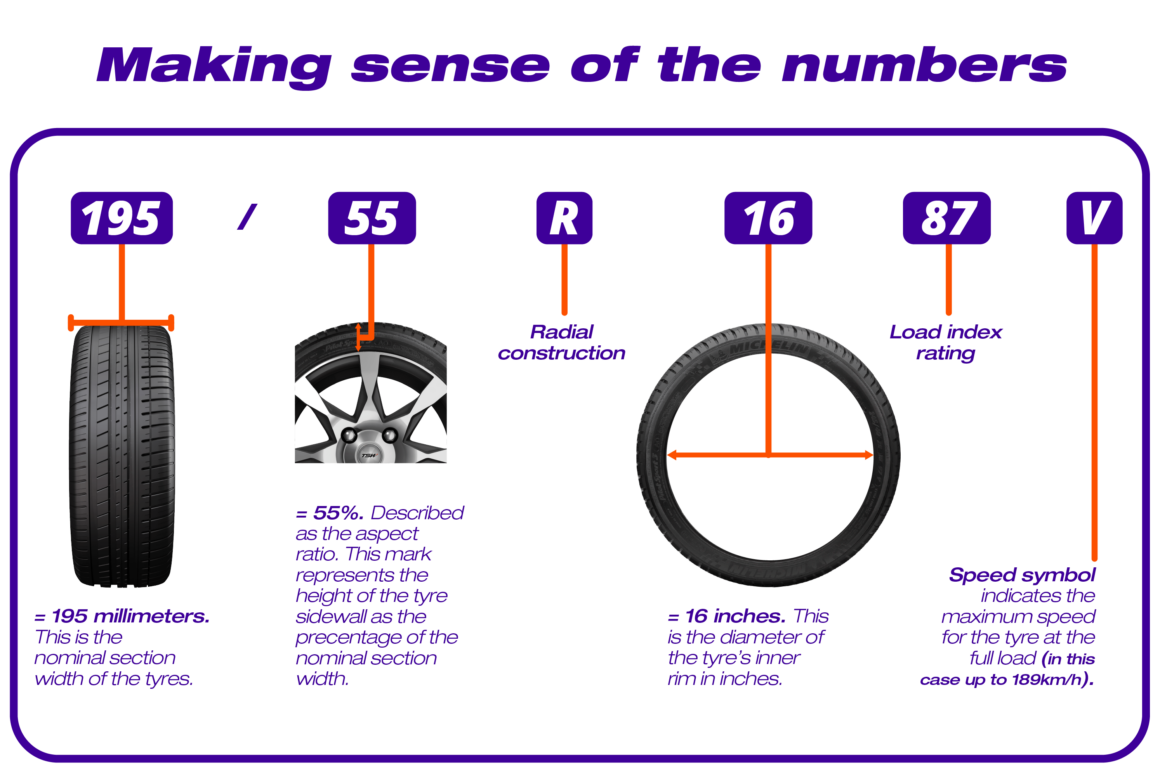Essential Tyre Knowledge: A Guide to Maximizing Safety and Efficiency
What is a Tyre Size?
Tyre size refers to the combination of numbers and letters found on the sidewall of a tyre. It describes the tyre’s dimensions and its purpose. Understanding these numbers helps you choose the right tyre for your vehicle.
For example, in a tyre marked “195/55 R16”:
- 195: The width of the tyre in millimeters from sidewall to sidewall.
- 55: The aspect ratio, which is the height of the sidewall as a percentage of the width. Here, 55% of 195 mm.
- R: Stands for radial construction, which is the most common type of tyre design.
- 16: The diameter of the wheel in inches that the tyre fits.
Differences Between Bias Tyre and Radial Tyre
Understanding the difference between bias and radial tyres helps in choosing the best tyre for your driving conditions:
- Bias Tyre:
- Constructed with layers of fabric running diagonally.
- Provides a stiffer sidewall, which makes them more resistant to damage, ideal for rough terrains and off-road use.
- Tends to wear faster and offers less fuel efficiency.
- Radial Tyre:
- Has layers running radially, with the cords at 90 degrees to the direction of travel.
- More flexible sidewall, improving ride comfort and fuel efficiency.
- Offers better traction and longer tread life, making them ideal for highway driving.
Radial tyres are the most common type for passenger vehicles, while bias tyres are still used in specific heavy-duty applications.
What are the Meanings of Speed Rating, Load Index, Traction Grade, and DOT?
- Speed Rating: Indicates the maximum speed the tyre can safely maintain under its rated load. It’s expressed by a letter on the sidewall, such as “H” for up to 210 km/h. Matching the speed rating to your vehicle’s performance is important for safety and optimal performance.
- Load Index: Shows the maximum weight a tyre can support. The higher the number, the greater the load the tyre can handle. For instance, a tyre with a load index of 95 can support 690 kg.
Traction Grade: This reflects a tyre’s ability to stop on wet surfaces. Graded as AA, A, B, or C, with AA being the best. It helps customers select tyres with superior braking performance, especially in wet conditions.
DOT: The Department of Transportation (DOT) code is a safety standard mark. It includes information about the tyre manufacturer and the week and year it was made. This code ensures the tyre meets federal safety standards.
What is a Tyre Wear Indicator?
Tyre wear indicators are small, raised bars located within the grooves of the tyre tread. These are placed at 1.6 mm, the legal minimum tread depth in most countries. As the tyre wears down, these bars become more visible, signaling that it’s time to replace the tyre.
Driving on worn tyres reduces traction, increases braking distances, and raises the risk of hydroplaning in wet conditions. Checking the wear indicators helps maintain safety and tyre performance.

